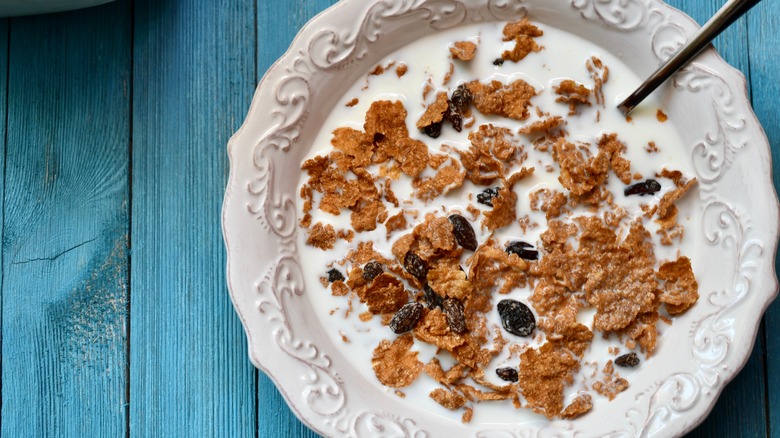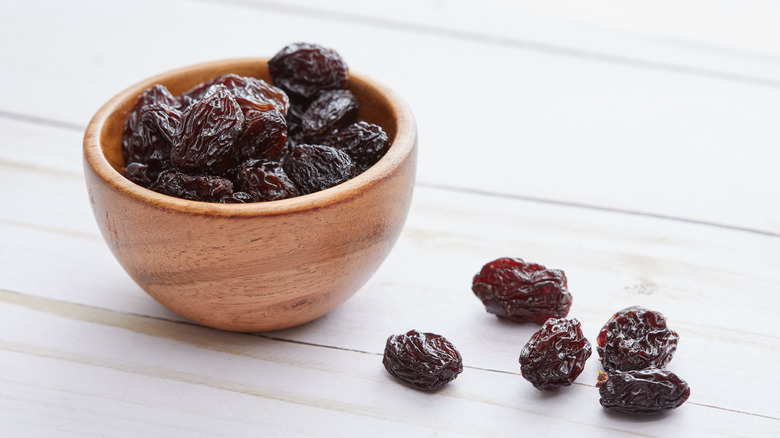Why Raisins Stay Soft In Store-Bought Cereal
Raisins get a lot of tough love in the food world. However, they do have a lot of delicious uses. Of course, raisins are the star of many baked goods from cookies to cinnamon rolls. But the dried fruits might even have a place in your favorite sandwich; a brie grilled cheese is easily elevated with cinnamon raisin bread, for instance. Raisins also play a role at breakfast, commonly found nestled in boxes of cereal.
No one likes a dry, hard raisin, though; no wonder Duff Goldman soaks them before baking oatmeal raisin cookies. Fortunately, cereal rarely seems to suffer from this issue, as the dried fruits stay relatively soft and chewy before ever coming into contact with milk. There's actually a scientific reason behind this; glycerol is often added to the raisins to lower their water activity. Essentially, water activity describes the amount of water within a particular food, which can move and affect the moisture content and texture of other ingredients.
The struggle with raisins in cereal is that raisins have a high amount of water in them, even though they are technically dried grapes. By comparison, crunchy cereal bits don't contain a lot of water. By controlling the water activity in the raisins, cereal manufacturers ensure that the fruits can stay soft for a long time while simultaneously preventing any bran flakes or granola from becoming soft, achieving a delicate balance of texture necessary for keeping the shelf-stable breakfast food delicious.
How water activity is managed in raisins
Although raisins are clearly not soaking wet in a cereal box, their remaining water can still move slowly between ingredients. Typically, water content will move from wet areas to dry areas, which, in this case, would result in the raisins drying out and the cereal becoming soggy. As such, the goal is to get the raisins and cereal pieces to a point at which the water activity is the same; that way, no water will move between the two.
Since making the water activity higher in dry cereal to match the raisins could result in overly soft bran flakes, it's easier to bring the water activity of the raisins down. To accomplish this, manufacturers use an edible humectant known as glycerol. Similar to glucose but not so sweet, this molecule absorbs and holds water, lowering the water activity of the raisins slightly.
Another common method that is used to keep raisins soft is to soak them in sugar water. Sugars function similarly to glycerol by retaining water, thus reducing water activity and preventing moisture from moving from the fruits and into the dry cereal pieces. However, this also increases the sugar content of the raisins, which can make them (and the cereal they're in) sweeter. Thankfully, there are many non-sugary breakfast cereals to choose from. And, of course, you can always add dried raisins to any of them yourself.

